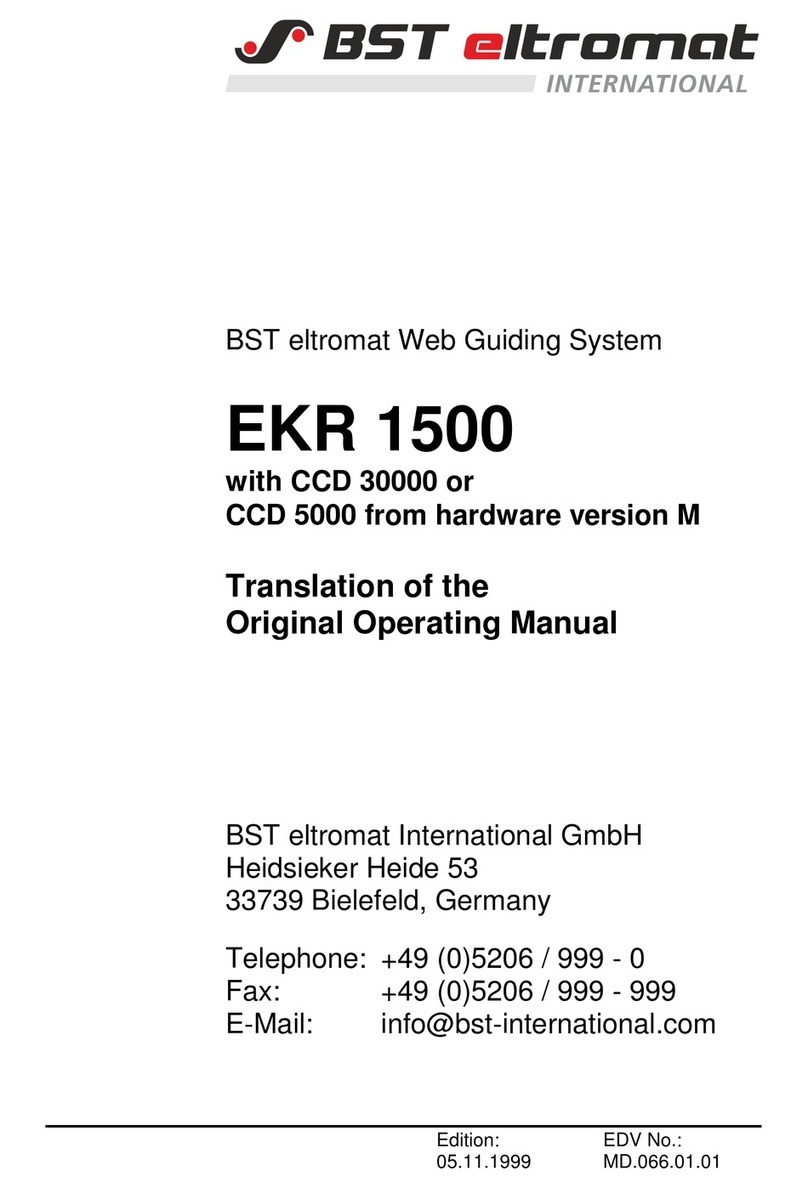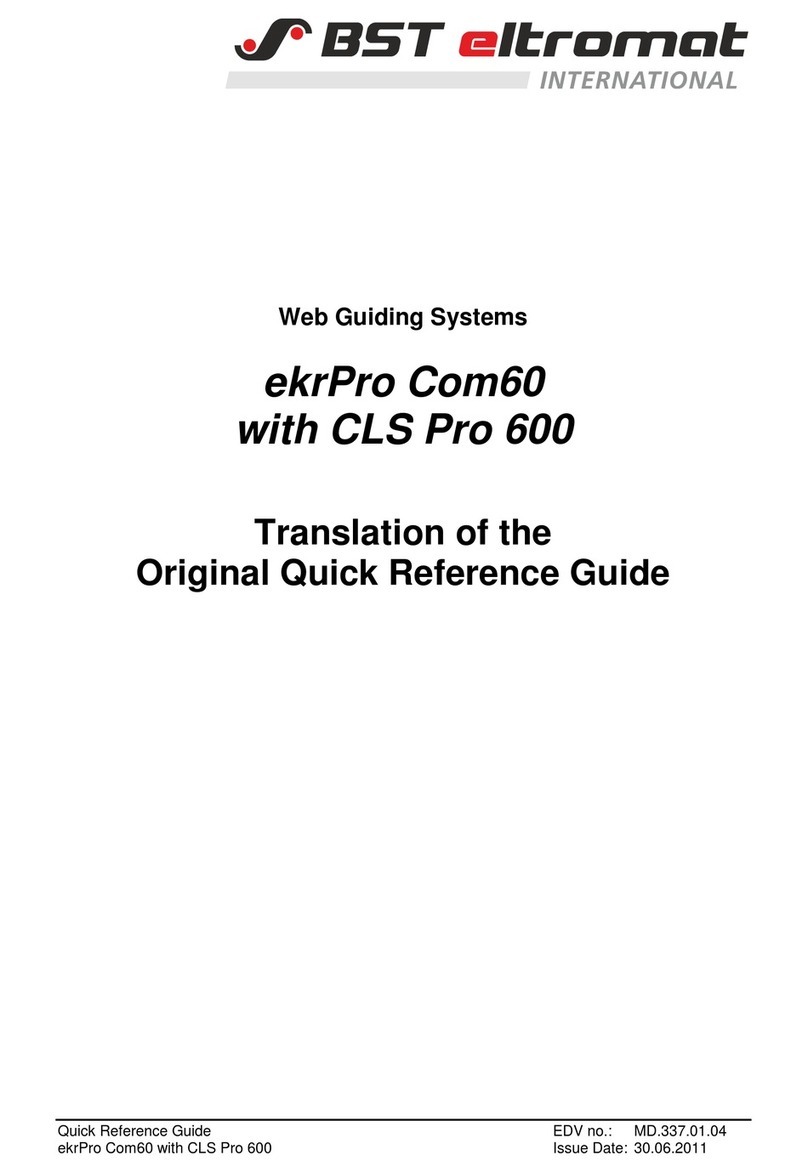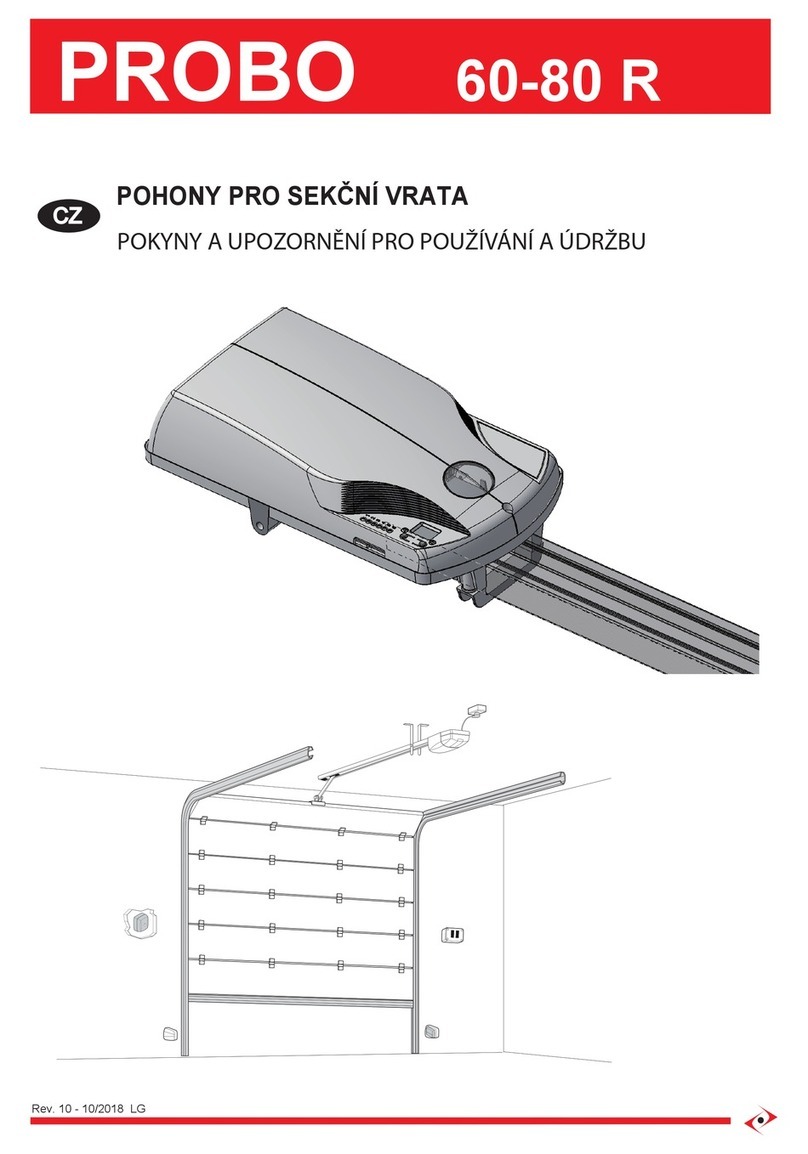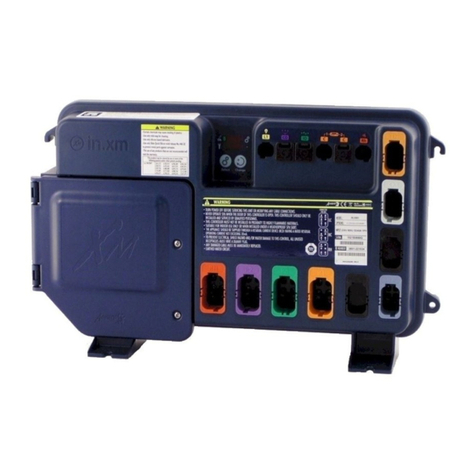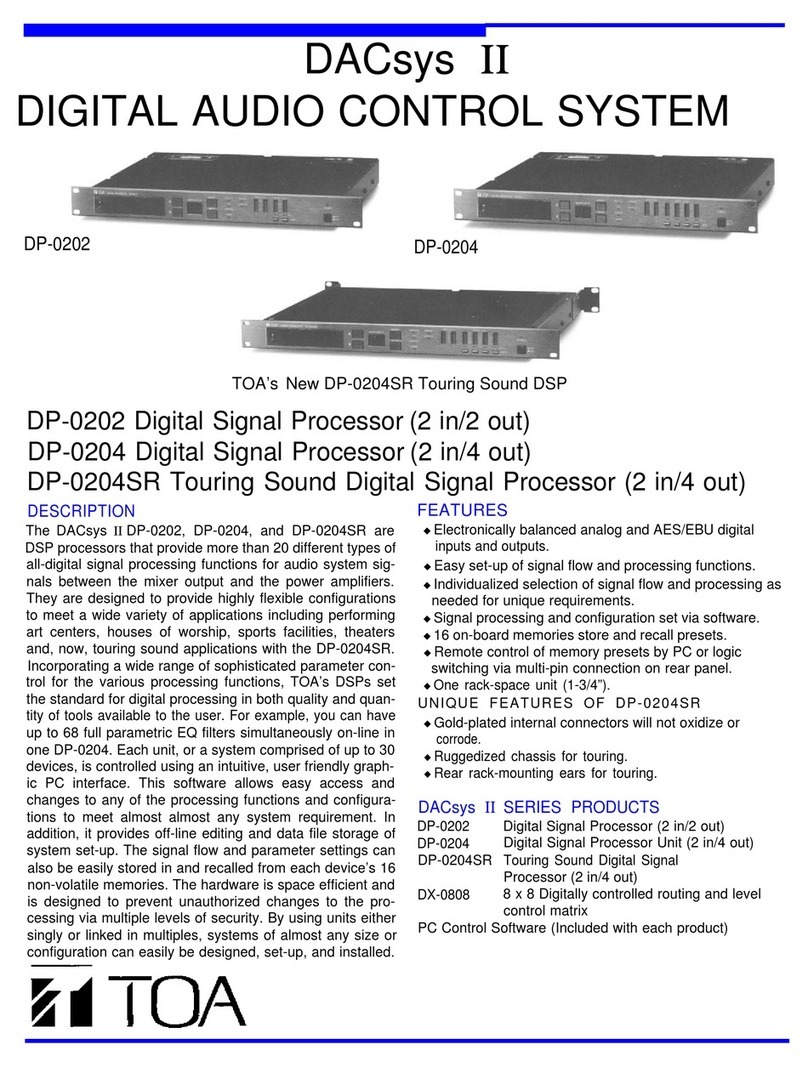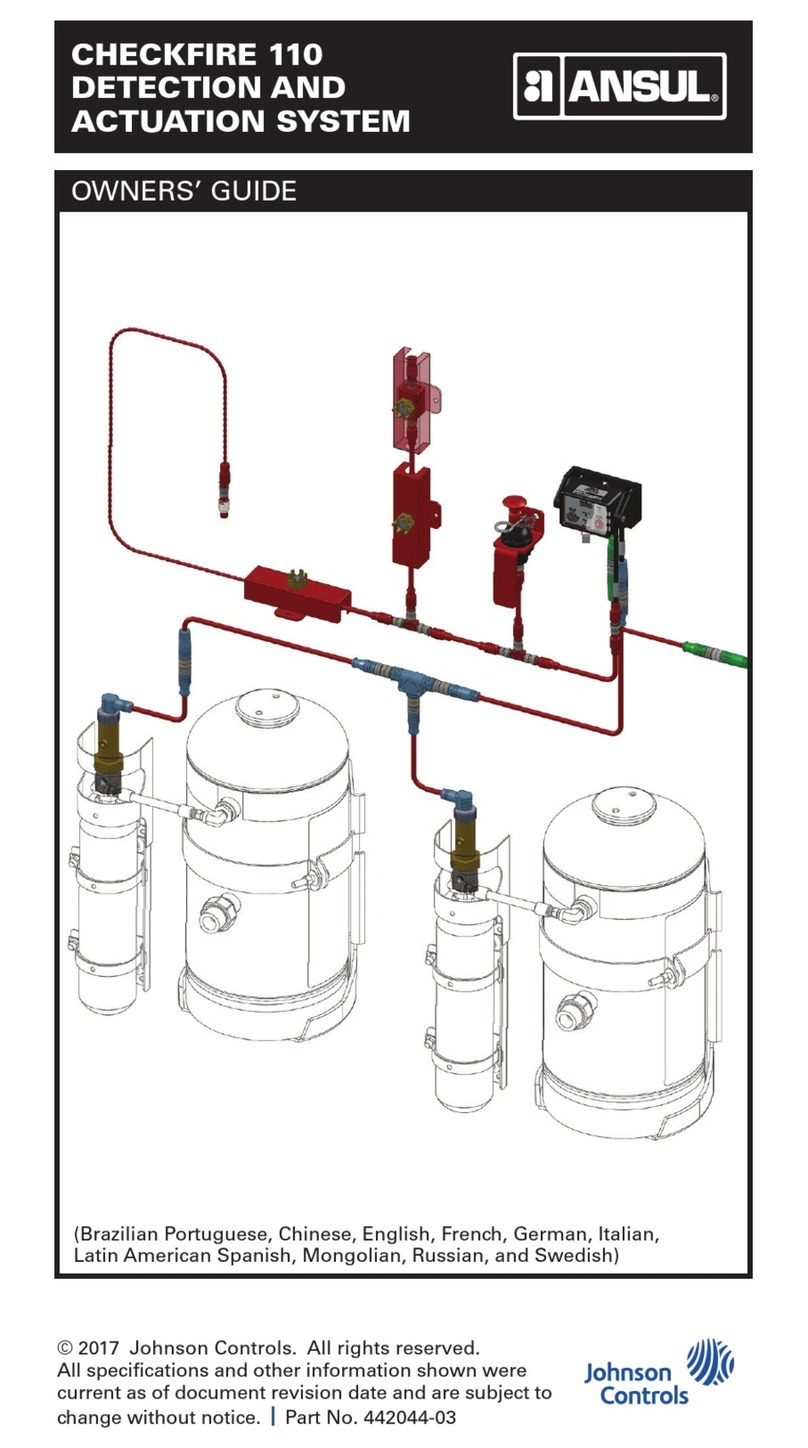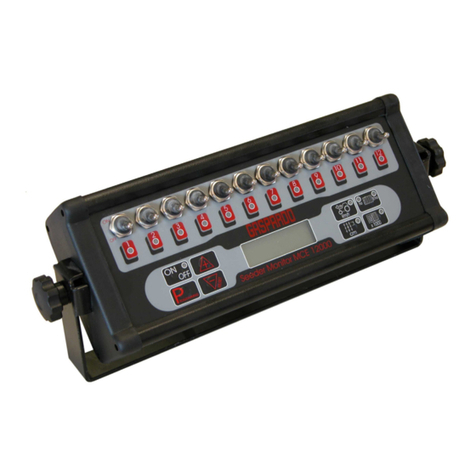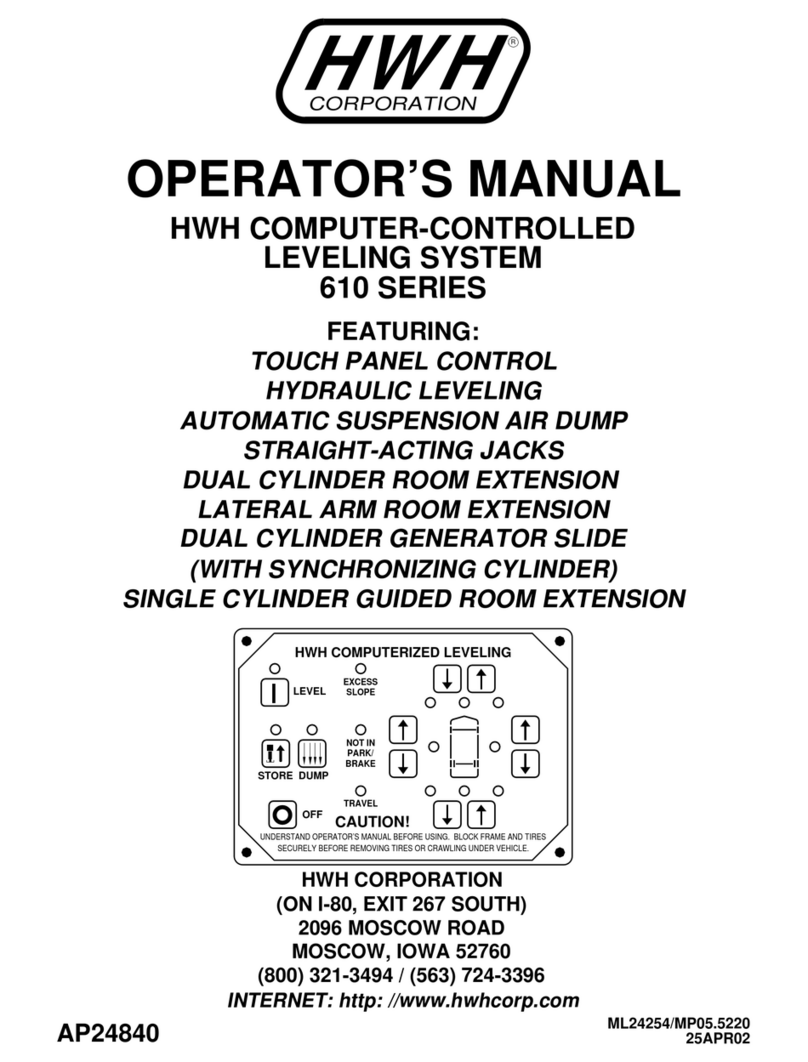BST eltromat EKR 1500 Operational manual

Edition: EDV No.:
12.04.2011 V3D.010.01.03
BST eltromat Web Guiding System
EKR 1500
with analogue sensors and CCD 2004
Translation of the
Original Operating Manual
BST eltromat International GmbH
Heidsieker Heide 53
33739 Bielefeld, Germany
Telephone: +49 (0)5206 / 999 - 0
Fax: +49 (0)5206 / 999 - 999
E-Mail: info@bst-international.com

Definition of the symbols in this manual
Attention
Instructions with this symbol safeguard the operator from injury
Caution
Instructions with this symbol must be strictly adhered to failure to do so could result in
electrocution
press key
key combination; between the keys means that these
keys have to be actuated simultaneously
LED ‘OFF’
LED constantly lighted = activated phase
LED blinking

0.0
Web guiding system EKR 1500 EDV-No.: V3D.010.01.03 Chapter: 0.0
with analogue sensors and CCD 2004 Date: 12.04.2011 Page: 1/1
Contents
Chapter 0 Contents
Chapter 1 Description
1.1 General
1.2 Connectable components
1.3 Operating elements
1.4 Significance of the keys on the front panel
1.5 Significance of the LEDs on the front panel
1.6 Safety instructions
1.7 Emissions
Chapter 2 Technical data
2.1 EKR 1500
2.2 Optical edge sensor IR 2001
2.3 Optical edge sensor IR 2002
2.4 Optical edge sensor IR 2005
2.5 Ultrasonic edge sensor US 2003, US 2008
2.6 Ultrasonic edge sensor US 2007
2.7 Ultrasonic edge sensor US 2009
2.8 Camera CCD 2004
2.9 Pneumo-electronic transducer ZT 6.008
Chapter 3 Transportation/Storage
Chapter 4 Mounting
4.1 Location requirements
4.2 Mounting plan
4.3 Installation
4.4 Installation of EMC-wiring
4.5 Installation of pneumatic edge sensor KF ...
Chapter 5 Start-up
5.1 Preparations for start-up
5.2 Adjustment of sensors
5.3 Start-up
5.4 Basic adjustment
5.5 Determine desired sense of rotation for manual operation
5.6 Starting automatic operation with sensor 1 (possibly sensor 2)
5.7 Electrical actuators
5.8 Hydraulic actuators
5.9 Pneumatic system BS 100 / pneumo-hydraulic transducer ZT 6.008
5.10 Start-up of camera CCD 2004
Chapter 6. Operation
6.1 Commander
6.2 Test of material contrast with optical sensors
6.3 Change of web material
6.4 Watchdog function
Chapter 7 Remote control
Chapter 8 Troubleshooting
Chapter 9 Maintenance
Chapter 10 De-commissioning
Annex Connection plan
Start-up of the actuator EMS 17

1.0
Web guiding system EKR 1500 EDV-No.: V3D.010.01.03 Chapter: 1.0
with analogue sensors and CCD 2004 Date: 12.04.2011 Page: 1/5
Please follow the instructions of
Start-up, maintenance and installation
as described in the operating instructions
1. Description
1.1 General
The EKR 1500 system is a microprocessor-controlled web guiding system. This guiding system
may be used for:
- web edge guiding (right or left)
- center-line guiding
- guiding on continuos or interrupted printed lines
- guiding on continuos or interrupted printed edges
- guiding to a printed line or edge with automatic change-over to edge or center-line
guiding when the printed line/edge is interrupted or has got lost (for example, in the
case of a web splice)
Please contact the producer for any different application.
The system has PLC-compatible inputs and also an ‘OK-relay’ with NO and NC contact.
Full integration into the machine control system via:
- I-O Module potential-free in- and outputs for extended PLC messages and
commands
- Intercon-Module direct, serial connection for integration of system results,
messages and commands into the machine control system.
- Interbus-S Module direct connection to Interbus-S Module as remote bus station
- PDP-Module for instantaneous communication with locally peripheral
equipment
Notice: Please find the connection plans of the nominated modules at the corresponding
operating instructions.
1.2 Connectable components
The following components have been discontinued. They are no longer available for new systems.
The corresponding sections of the operating instructions are only relevant to the operation of
existing systems.
Component
replacement
CCD 2004
CLS Pro 600
IR 2001/5/30 L
IR 2005/5/30
IR 2001/3/100
IR 2001/10/100
IR 2001/5/100
IR 2001/10/100
IR 2001/3/30
IR 2001/10/30 resp. IR 2005/3/30
US 2003/30
US 2010/40
US 2003/70
US 2010/70
US 2008/30
US 2007/40 resp. US 2009/40
US 2008/70
US 2009/70
EMS 6; 80 mm stroke
none
EMS 16
EMS 18
EMS 17
EMS 18
ZT 6008
none
Profibus DP-Module for switching cabinet installation
none
CAN-Module
none
IO-Module
none

1.0
Web guiding system EKR 1500 EDV-No.: V3D.010.01.03 Chapter: 1.0
with analogue sensors and CCD 2004 Date: 12.04.2011 Page: 2/5
1.3 Operating elements
* The amplifier includes all necessary operating elements.
Option: - Remote control by external signals, sensors or keys
Attention! External keys will interlock the reverse function keys at the amplifier.
- If system locking is desired (e. g., in case of machine stop), this can be
achieved by means of external contacts or signals from the PLC.
* Connection of components via separated terminal compartment.
Advantage: quick and easy accessibility to the terminal parts.
* Indication of web edge position by two LED arrays
Advantage: - simple control of the web edge within the measuring range of sensors
- simple adjustment of the desired position of the web or edge sensors
- variations of web width exceeding via the admissible value

1.0
Web guiding system EKR 1500 EDV-No.: V3D.010.01.03 Chapter: 1.0
with analogue sensors and CCD 2004 Date: 12.04.2011 Page: 3/5
1.4 Signification of the keys on the front panel
key and/or combination of keys function
AUTO (1) = automatic guiding
MAN (2) = manual positioning
S-C (3) = servo-center of the servo component
/ + (4) + MAN = manual shifting
+ AUTO = shifting of guiding point to the left *
+ SET UP + AUTO = increase of gain
/ -(5) + MAN = manual shifting
+ AUTO = shifting of guiding point to the right *
+ SET UP + AUTO = decrease of gain
SET UP (6) AUTO = release of gain with the keys (4) and (5).
+ MAN and/or S-C = SET UP when changing the material
ENTER (7) = storing of the adjustment and end of SET UP
functions
”SENSOR LEFT” (8) = guiding to the left web edge
”SENSOR RIGHT” (9) = guiding to the right web edge
Line/Printed edge (20) = guiding to a printed line or edge (also interrupted) with
CCD 2004
Watchdog (21) = automatic change-over to edge guiding when the
printed line or edge is interrupted or has got lost.
When the printed line or edge reappears, the guiding
function is taken over automatically by CCD 2004

1.0
Web guiding system EKR 1500 EDV-No.: V3D.010.01.03 Chapter: 1.0
with analogue sensors and CCD 2004 Date: 12.04.2011 Page: 4/5
1.5 Signification of the LED´s on the front panel
* The LED’s on the keys indicate the switched-on function.
* The blinking of LED’s AUTO (1) , MAN (2) , S-C (3) , SET UP (6) or LED- arrays 10 - 14
and/or 15 - 19 indicate a fault message. Simultaneously, the OK-relay is switched-off. (see
also chapter 8)
* LED-No. 10, 14,15 and 19 (red) signalise the limits of the measuring band of the sensors.
* LED-No. 12 and 17 (green) signalise the center of the measuring band of the sensors.
* additional indications of the LEDs for gain and shifting of the guiding point see points 5.10.3,
6.1.3, 6.2 and 6.3.
10 11 12 13 14 15 16 17 18 19

1.0
Web guiding system EKR 1500 EDV-No.: V3D.010.01.03 Chapter: 1.0
with analogue sensors and CCD 2004 Date: 12.04.2011 Page: 5/5
1.6 Safety instructions
* Installation of the BST eltromat equipment into the production machine according to the relevant
rules ( EN 294, EN 349) and the specific branch-oriented regulations for prevention of accidents,
such as:
- Safety distance between BST eltromat equipment and customer´s specification, e. g. machine
walls, construction etc.
- Installation of connecting cables between amplifier and controller and/or edge sensor
stumble-free, nontension and well anchored.
- Take care of free headroom. If the free passage is limited, respective building components
have to be stuffed and painted in yellow/black.
Assembly, installation and commissioning must be carried out by qualified personnel !
Please do not open the unit until the line voltage is switched off!
When operation at open unit is necessary, only protection class IP20 is present. There
will be an increased risk of danger by line voltage !
- Please do not use the guiding frame as a tread or a step ladder.
- Don’t remove any safety devices.
During functional testing outside of production machine and/or during the start-up
procedure the actuator will carry-out positioning movements!
Make relevant safety arrangements during performance check !
During start-up procedure, the total safety concept of the production machine will have to
be considered.
* Before commissioning remove transport safety devices (if present).
1.7 Emissions
The A-rated equivalent continuous sound level of the equipment is lower than 70 dB(A).

2.0
Web guiding system EKR 1500 EDV-No.: V3D.010.01.03 Chapter: 2.0
with analogue sensors and CCD 2004 Date: 12.04.2011 Page: 1/4
2. Technical Data
2.1 EKR 1500
* Line voltage: 115V/230V +10% / -20% 50-60Hz
* Power consumption: approx. 80VA
* Fuses: 115V 1 AT
230V 0,5 AT
* Outputs: amplifier (adjustable, see also ‘Lay jumper according to
application’, chapter 5.0, point 5.1)
+/- 24V; max. 1A or
+/- 24V; max 0,33A or
+/- 300mA current source of electric power short circuit proof,
Dither amplitude adjustable
Supply to accessories
+/- 12V (min. +/- 11,4V) at max. 50mA
+ 24V non regulated supply max. 0,4A
Status signal (”system OK”)
potential-free change-over switch, max. 230V, 1A
* Inputs: remote inputs (signification see ”Truth table” chapter 7)
lock-out (controller interlock): possible by means of external
switch or PLC
limit switch inputs: (without cut-out)
Ri= 4,7 kOhm
active (1) > 8V
not active (0) < 4V
tlow > 30ms
Uin Max acc. to IEC 1,2kV / 50µs
analogue inputs (see also chapter 5, point 5.1 and connecting
plan)
2x 0...+ 5V or 0...+ 10V, individual adjustable
2x ± 9,75V or 0... + 9,75V, individual adjustable
2x ± 11,75V
1x NAMUR adaptation with output ± 11,75V
tacho input for motor powered actuator
* Interface: serial interface RS485 for BST eltromat module bus
* Protection class: IP 54
* Ambience conditions: temperature: 0 - max. 45 deg.C
atmospheric humidity: 0 - 90%, non-condensed
* Dimensions: W = 263mm, D = 214mm without screwed connections,
H = 115mm
* Weight: approx. 3kgs

2.0
Web guiding system EKR 1500 EDV-No.: V3D.010.01.03 Chapter: 2.0
with analogue sensors and CCD 2004 Date: 12.04.2011 Page: 2/4
2.2 Edge sensor IR 2001
Power supply: by amplifier
Measuring band: 12mm, typical
Maximum sensing range: 15mm, typical
Output: analogue
Protection class: IP54
Ambience conditions: temperature: 0 - 45 deg.C
atmospheric humidity: 5 - 90%, non-condensed
Dimensions (standard application): W = 40mm
H = 95mm
L = 107mm
2.3 Edge sensor IR 2002
Power supply: by amplifier
Measuring band: 8mm, typical
Maximum sensing range: 13mm, typical
Output: analogue
Protection class: IP54
Ambience conditions: temperature: 0 - 45 deg.C
atmospheric humidity: 5 - 90%, non-condensed
Dimensions (standard application): W = 25mm
H = 57mm
L = 85,5mm
2.4 Edge sensor IR 2005
Power supply: by amplifier
Measuring band: 12mm, typical
Maximum sensing range: 15mm, typical
Output: analogue
Protection class: IP54
Ambience conditions: temperature: 0 - 45 deg.C
atmospheric humidity: 5 - 90%, non-condensed
Dimensions (standard application): W = 25mm
H = 94mm
L = 69mm

2.0
Web guiding system EKR 1500 EDV-No.: V3D.010.01.03 Chapter: 2.0
with analogue sensors and CCD 2004 Date: 12.04.2011 Page: 3/4
2.5 Ultrasonic sensor US 2003, US 2008
Power supply: by amplifier
Measuring band: 15mm, typical
Maximum sensing range: 15mm, typical
Output: analogue
Protection class: IP54
Ambience conditions: temperature: 0 - 45 deg.C
atmospheric humidity: 5 - 90%, non-condensed
Dimensions (standard application): W = 25mm
H = 76mm
L = 113mm
2.6 Ultrasonic sensor US 2007
Power supply: by amplifier
Measuring band: 15mm, typical
Maximum sensing range: 15mm, typical
Output: analogue
Protection class: IP54
Ambience conditions: temperature: 0 - 45 deg.C
atmospheric humidity: 5 - 90%, non-condensed
Dimensions (standard application): W = 25mm
H = 94mm
L = 69mm
2.7 Ultrasonic sensor US 2009
US 2009/40
US 2009/70
Power supply:
by amplifier
Measuring band:
12 mm
14 mm
Maximum sensing range:
12 mm
14 mm
Output
analogue
analogue
Protection class:
IP 67
IP 67
Ambience conditions:
temperature: 0 ... +60 °C
atmospheric humidity: 5…90%
temperature: 0 ... +60 °C
atmospheric humidity: 5…90%
Dimensions:
W: 96 mm
H: 88 mm
L: 39 mm
W: 96 mm
H: 118 mm
L: 39 mm

2.0
Web guiding system EKR 1500 EDV-No.: V3D.010.01.03 Chapter: 2.0
with analogue sensors and CCD 2004 Date: 12.04.2011 Page: 4/4
2.8 CCD 2004
Operating voltage: 15V to 24V (by amplifier)
Power consumption: 6W
Measuring band: 8mm, typical
Min. line width: 0,8mm
Sensor resolution: 2000 pixel
Exposure time: min. 1ms
max. 20ms
Interface: serial interface RS485 for BST eltromat module bus
Protection class: IP54
Ambience conditions: temperature: 0 - 45 deg.C
atmospheric humidity: 5 - 90%, non-condensed
Weight: 845g
2.9 Pneumoelectric transducer ZT 6.008
Power supply: by amplifier
Signal inputs: 0 - 10 mbar
Output: ± 10V
Protection class: IP54
Ambience conditions: temperature: 0 - 45 deg.C
atmospheric humidity: 5 - 90%, non-condensed
Dimensions (standard application): W = 200mm
H = 70mm
L = 120mm (without air connections)

3.0
Web guiding system EKR 1500 EDV-No.: V3D.010.01.03 Chapter: 3.0
with analogue sensors and CCD 2004 Date: 12.04.2011 Page: 1/1
3. Transport/Storage
Depending upon the order, delivery will be carried out:
- completely built-in and connected with the actuator or
- as component parts in standard cardboard boxes with cellular lining material.
If the unit is not incorporated immediately, please storage it in a dry room until mounting.

4.0
Web guiding system EKR 1500 EDV-No.: V3D.010.01.03 Chapter: 4.0
with analogue sensors and CCD 2004 Date: 12.04.2011 Page: 1/4
262
180
M4 or Ø 5
housing EKR 1500
212 191
131
4. Mounting / Installation
4.1 Location requirements
The amplifier has to be installed in a dry, vibration-free area.
Ambient temperature: 0 - max. 45 deg.C
4.2 Mounting plan

4.0
Web guiding system EKR 1500 EDV-No.: V3D.010.01.03 Chapter: 4.0
with analogue sensors and CCD 2004 Date: 12.04.2011 Page: 2/4
4.3 Installation
Mounting plan see point 4.2
1 - Open terminal
compartment
2 - Push the housing up-
ward so that the moun-
ting rails stay flush
again in respect of the
upper edge of the
housing.
3 - Apply the third fixing in
the terminal compart-
ment. Complete wiring
and close terminal
compartment.
Pull the two rear
mounting rails upward
and screw into the
mounting wall
19
150
214
25
115
10
276
AUTO
S - C
MAN
SET UP ENTER
SENSORL EFT SENSORR IGHT
264
6
AUTO
S - C
MAN
SET UP ENTER
SENSORL EFT SENSORR IGHT
AUTO
S - C
MAN
SET UP ENTE R
SENSORL EFT SENSORR IGHT
BRIGHT DARK
BRIGHT DARK
BRIGHT DARK

4.0
Web guiding system EKR 1500 EDV-No.: V3D.010.01.03 Chapter: 4.0
with analogue sensors and CCD 2004 Date: 12.04.2011 Page: 3/4
4.4 Installation of EMC-wiring
remove 90mm of
disk of the cable shield external insulation
fitting
black rubber
sealing-
parts conical sealing
(metal/rubber)
nut unscrew nut and
sealing parts and pin
them up to the end
of the cable
figure 1 figure 2
insulated cable leads
remove 60mm of shield, so galvanised washer
that 30mm remain visible 10 x 16 x 0,5 DIN 988
30mm
vanished shield
Fan the protective shield, so
that the individual wires of the
shield protrude evenly from
the cable, approx. at right angle.
Tread the individual insulated
leads through the galvanised
washer, included in delivery
and press the washer onto the
shield braiding.
figure 3 figure 4
only for connecting cable CCD 5000
up to hardware version G
and Interbus-S
ferrite core
Refold and twist the shield housing
braiding over the washer.
Tighten the cable in the cable
gland. Strip the lead ends cable gland
(eventually, use protective lugs)
and wire according to connection
diagram. Screw down the cable gland and
then pin up the ferrite core to the
end of the cable, according
to the drawing.
figure 5 figure 6

4.0
Web guiding system EKR 1500 EDV-No.: V3D.010.01.03 Chapter: 4.0
with analogue sensors and CCD 2004 Date: 12.04.2011 Page: 4/4
4.5 Installation of pneumatic sensing system
1. Pneumatic edge sensors have to be mounted in such a way that with horizontal web path the
connection S1, carrying the higher pressure, is placed below (air escape S1 turned towards
above).
2. Slip the hose ends onto the corresponding connection pieces S1 and S2.1at the pneumo-
electronic transducer ZT 6.008.
3. Connect the second edge sensor with the second connection piece S1 and the connection
piece marked S2.2. If only one sensor is present, seal the second connection S1 at the
ZT 6.008. S2.2 remains open and blows off.
4. The hose pipes towards the sensors should not exceed a length of 3m each and should have a
few ‘bends’ if possible.
5. Connect the air outlet at the BS 100 unit by means of single air hose with the connection piece
in the middle (not varnished) at the ZT 6.008 transducer.
When the ZT 6.008 is not directly mounted to the BS 100 unit, the length of the air hose may
be up to 6m (please contact the manufacturer for longer hoses).
Attention: Do not connect BS 100 with the connections S1, S2.1 or S2.2 at the ZT 6.008
transducer; such action will destroy the ZT 6.008!
Blowing in compressed air is inadmissible and will also destroy the unit!
The lateral channel compressor unit BS 100 has to be installed on even and plane surface either
vertically or horizontally.
In case of separate mounting, the pneumo-electronic transducer ZT 6.008 has to be attached to
a vibration-free surface. Make sure that free access to the interior of the box is possible after
having removed the cover.

5.0
Web guiding system EKR 1500 EDV-No.: V3D.010.01.03 Chapter: 5.0
with analogue sensors and CCD 2004 Date: 12.04.2011 Page: 1/18
5. Start-up
5.1 Requirements for Start-up
1. Set DIL-switches according to application.
S1.1 = Inverse function Automatic
S1.2 = OFF = electric motor powered actuator
ON = lifting of zero level and Dither for hydraulic units
(from software version E0030401 see schedule 1)
S1.3 = Inverse function S-C
S1.4 = OFF = normal operation
ON = guiding to sensor 3 and 4 with scaling = 1:1 (e. g. Slave)
S1.5 = OFF = EMS1/plunger coil regulator
ON = EMS5 or EMS 1000 power module
S1.6 = ON = chase and follow system with camera CCD 5000
S1.7 = = inverse function CCD camera 3
S1.8 = OFF = EKR 1000, EKR 1500
ON = CCD Line Guider
Choice of lighting for CCD 2004
S2.3 S2.2 S2.1
OFF OFF OFF
OFF OFF ON
OFF ON OFF
OFF ON ON
ON OFF OFF
Lamp 1 and 2 always off
Lamp 1 always on, lamp 2 always off
Lamp 2 always on, lamp 1 always off
Lamp 1 and 2 always on
Choice of the lamps automatically
S2.4 = OFF = ”Shifting of guiding point” via arrow keys is permitted
ON = ”Shifting of guiding point” via arrow keys is locked
S2.5 = = from software version E0030401 see schedule 1
S2.6 = ON = exposure time adjustment of ‘CCD 2004 from H’ is locked
S2.7 and S2.8 = see schedule 2
Lageplan EKR 1500
EPROM
Prozessor RAM
TRAFO
S1.1
S1.2
S1.3
S T U V W X S1.4
S1.5
JX12 JX13 JX14 S1.6
IS1.7 H1
H J K L M N Z S1.8 H2
YS2.1 H3
JX8 JX9 S2.2 H4 A
H11S2.3 H5 B JX11
115V: F1= 1AT F1 S2.4 H6 C
230V: F1= 0,5AT OK 444546474950515253545556575859606162636465666768697071727374 S2.5 H7 D
OS2.6 H8 E JX10
P404142 0 6 7 8 9 1011 0 13141516171820212224252628293132333435363738 S2.7 H10 H9 F
L N RRelais S2.8
Darstellung nicht maßstäblich! LED +5V

5.0
Web guiding system EKR 1500 EDV-No.: V3D.010.01.03 Chapter: 5.0
with analogue sensors and CCD 2004 Date: 12.04.2011 Page: 2/18
Schedule 1 Special functions of the DIL switches S1 and S2
from software version E0030401
S1.2 S2.5 function
OFF OFF electric motor powered actuator
lifting of zero level OFF
Dither OFF
OFF ON electric motor powered actuator
lifting of zero level ON
Dither OFF
ON OFF hydraulic actuator
lifting of zero level ON
Dither ON
ON ON hydraulic actuator
lifting of zero level OFF
Dither ON
Schedule 2 Signification of LED´s in the terminal box for service indication
The type of indication can be selected by means of S2.7 and S2.8.
LED
S2.7 OFF
S2.8 OFF
S2.7 ON
S2.8 OFF
S2.7 OFF
S2.8 ON
S2.7 ON
S2.8 ON
H1
CCD1
locking from
remote control
actuator fully
stabilized
H2
CCD2
locking from
CCD1
external release of
keyboard and remote
control interlock
H3
CCD3
locking from
CCD2
H4
INTERCON (1/2)
locking from
CCD3
H5
INTERBUS-S module
locking from external
command module
INTERBUS,
INTERCON,
I-O Modul
H6
I-O module (1/2)
locking from
FVG 1000 module
H7
FVG 1000 module
internal locking of the EKR
H8
blinker
blinker
blinker
blinker
The blinker indicates a perfect program flow.
LED H11 indicates the correct function of the relay ‘system ok’ (LED is lighting)
LED extinguishes if a failure occurs (see also chapter 8 ‘Trouble shooting’)

5.0
Web guiding system EKR 1500 EDV-No.: V3D.010.01.03 Chapter: 5.0
with analogue sensors and CCD 2004 Date: 12.04.2011 Page: 3/18
2. Lay jumper according to the application
The amplifier (standard version with electric motor powered actuator) is preset by manufacturer as
follows:
jumper O-P equipotential bonding carried out
jumper J-K signal input 0...10V
jumper M-N signal input 0...10V
jumper D-E tacho ‘OFF’
jumper A motor ± 24V
jumper S-T signal input ± 9,75V
jumper V-W signal input ± 9,75V
Modification/adjustment is only necessary by a different application.
Socket Jumper Function Comment
JX1 O-P equipotential bonding carry out equipotential bonding
P-R PE / 0V non equipotential bonding
JX8 H-J signal sensor 3 signal input 0...5V
J-K (terminal 56) signal input 0...10V
JX9 L-M signal sensor 4 signal input 0...5V
M-N (terminal 60) signal input 0...10V
JX10 D-E motor tacho + tacho ‘OFF’
E-F motor tacho - tacho ‘ON’
JX11 A servo component A motor ± 24 V
B servo component B (0V) plunger coil ± 300mA
C servo valve ± 1A
JX 12 S-T signal sensor 1 signal input ± 9,75V
T-U (terminal 11) signal input 0...9,75V
JX13 V-W signal sensor 2 signal input ± 9,75V
W-X (terminal 18) signal input 0...9,75V
JX14 I-Z reserved
Z-Y reserved
Other manuals for eltromat EKR 1500
1
Other BST Control System manuals
Popular Control System manuals by other brands
Lennox
Lennox Icon Hardware Installation and System Commissioning Guide

Carrier
Carrier PIC 5+ user manual
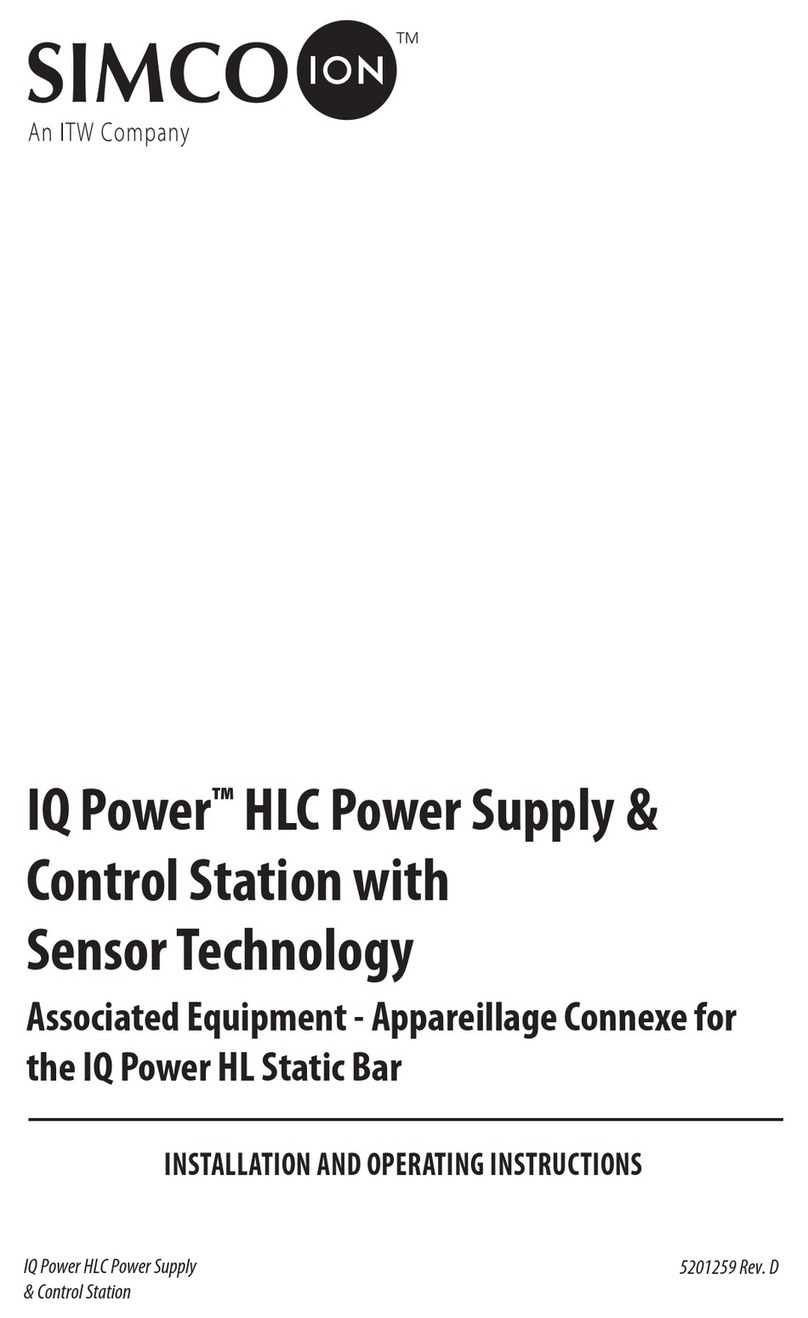
ITW
ITW SIMCO ION IQ Power HLC Installation and operating instructions

Mitsubishi Electric
Mitsubishi Electric Evolution+ s-MEXT Technical manual
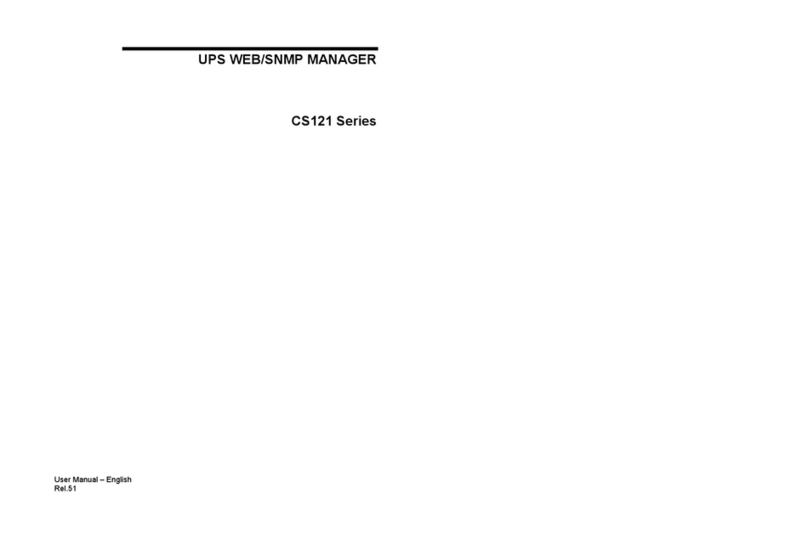
Generex
Generex CS121L user manual
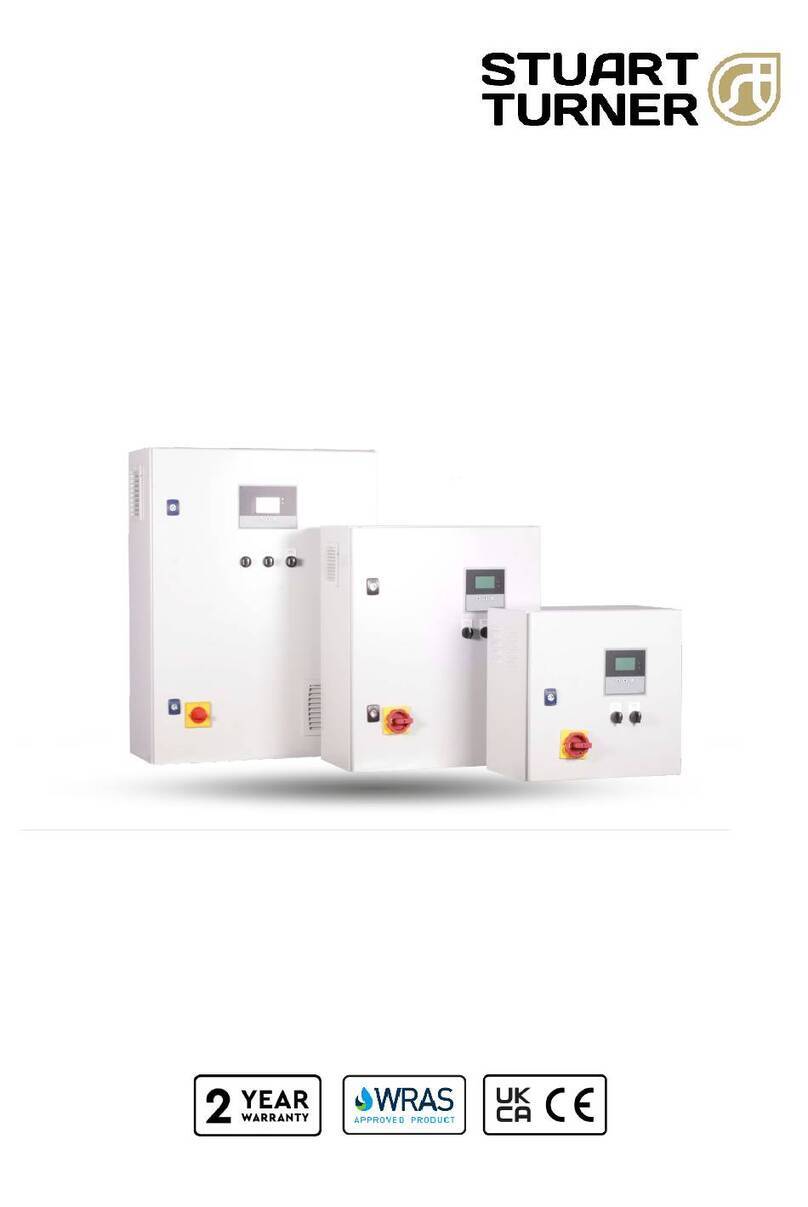
Stuart Turner
Stuart Turner AQUABOOST manual
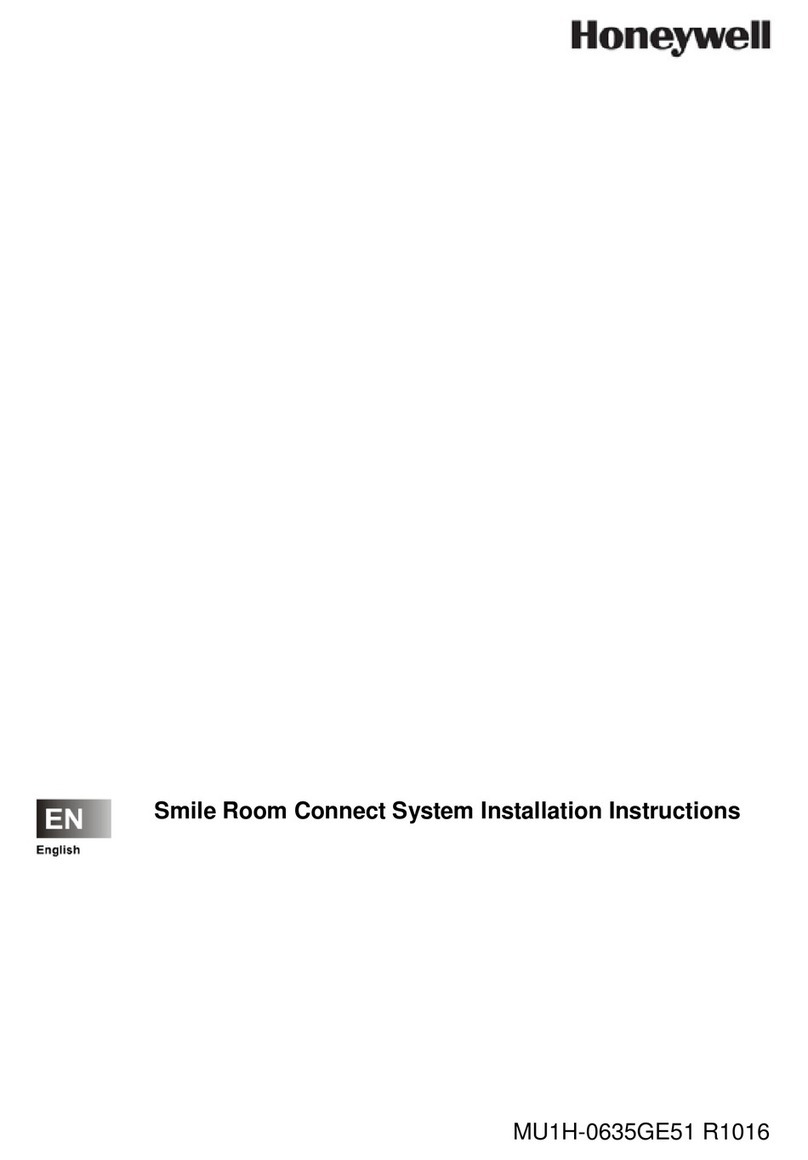
Honeywell
Honeywell Smile Room Connect SRC-10 installation instructions
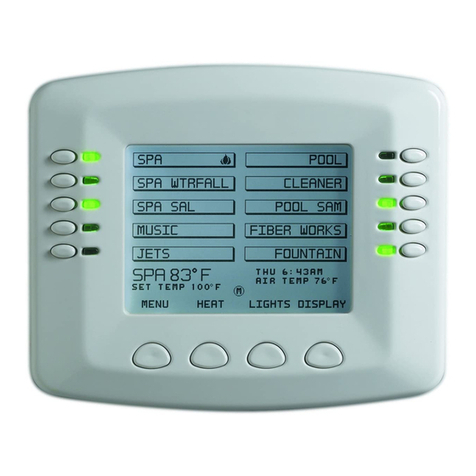
Intellitouch
Intellitouch IntelliTouch user guide

ZKTeco
ZKTeco SBTL5000 series user manual
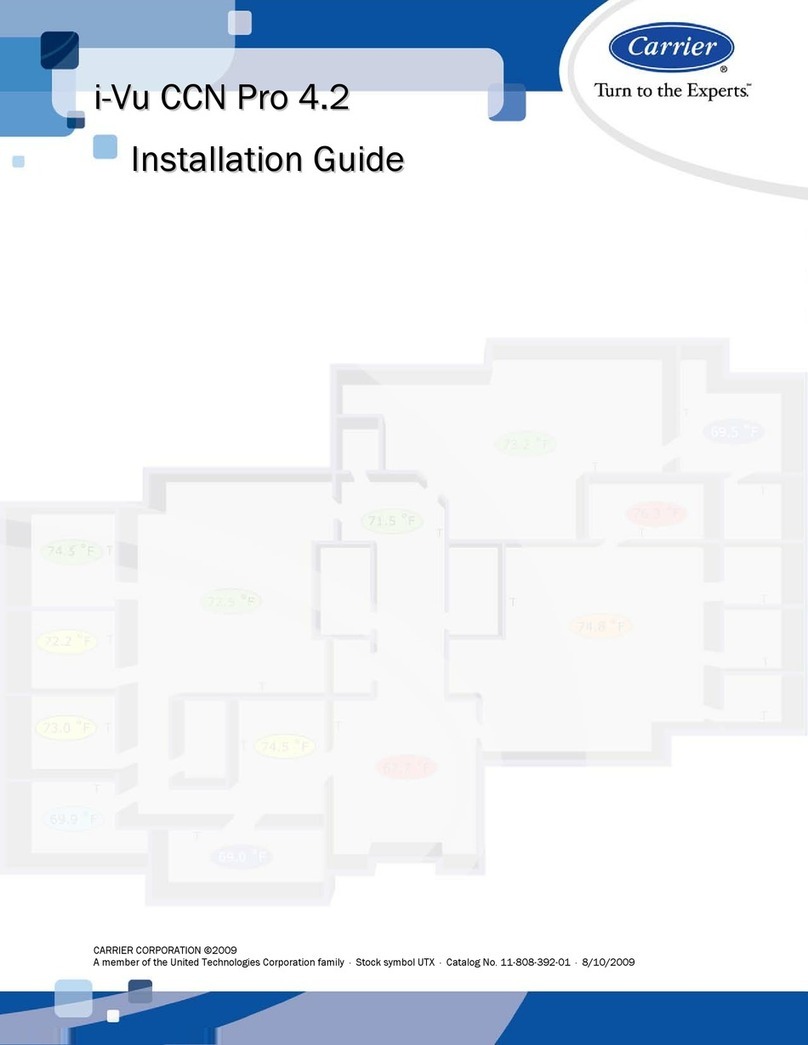
Carrier
Carrier i-Vu CCN Pro 4.2 installation guide
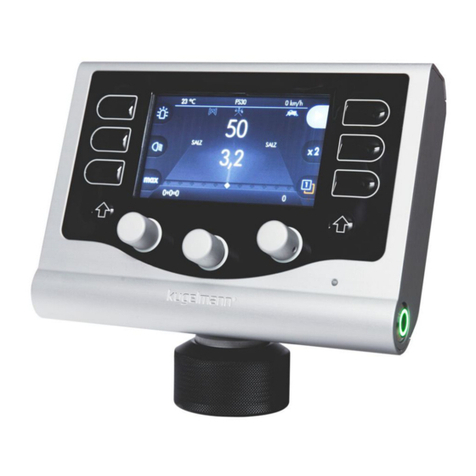
Kugelmann
Kugelmann K-TRONIC 2 Original operating instructions

ProMinent
ProMinent DULCOMARIN 3 Compact Assembly and operating instructions
